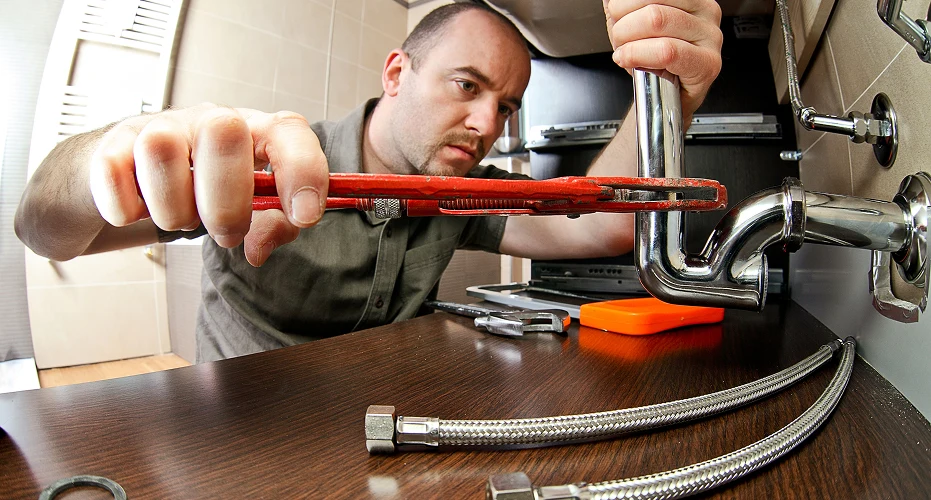A plumbing system failure can be one of the most stressful and disruptive problems a homeowner can experience. Whether it’s a burst pipe, a clogged drain, or a complete breakdown of your water supply, plumbing issues can wreak havoc on your daily life. However, acting quickly and knowing what to do can help mitigate the damage and restore normalcy as soon as possible. This blog post will guide you through the essential steps to take when your plumbing system suddenly fails.
Recognizing the Signs of Plumbing Failure
Before diving into the immediate actions you should take, it’s important to understand the signs of a plumbing system failure. Some common indicators include low water pressure, discolored water, unusual sounds from pipes, foul odors from drains, or the presence of water where it shouldn’t be, such as leaking under sinks or around the base of toilets. The faster you identify a plumbing failure, the quicker you can respond to it.
Turn Off the Water Supply
The first step in managing a plumbing failure is to turn off the water supply to your home. This will prevent further water from entering your pipes and causing more damage. Most homes have a main shut-off valve located near the water meter, typically in the basement or on the exterior of the house. Knowing the location of this valve before an emergency occurs can save precious time during a crisis. Once the water supply is off, you can assess the situation without worrying about additional water flowing through your pipes.
Assess the Situation and Identify the Problem
After turning off the water supply, take a moment to assess the situation. Are you dealing with a small leak or a major rupture? Is there water flooding your home, or is it just a localized issue? If it’s safe to do so, try to determine where the problem is originating. For example, a burst pipe may need immediate attention, while a clogged drain might only require a plunger or a drain snake.
In some cases, the issue may not be immediately visible, and the cause of the problem could be hidden behind walls or beneath floors. If you cannot easily locate the source of the failure, consider calling a professional plumber to conduct an inspection.

Minimize Water Damage
If the plumbing failure involves water leakage, it’s essential to act fast to minimize damage to your property. Start by removing any furniture or belongings from the affected area. If water is pooling on the floor, use towels, mops, or a wet/dry vacuum to absorb as much water as possible. The longer water sits, the more damage it can cause to your floors, walls, and furniture.
If flooding is significant, you may need to use a sump pump or a professional water removal service. These tools can help clear standing water quickly and reduce the risk of mold growth and structural damage.
Attempt Temporary Fixes for Minor Issues
If the plumbing failure is relatively minor and you’re able to identify the problem, you may be able to implement a temporary fix until a plumber arrives. For example, if you have a small leak, you can use duct tape or a rubber patch to cover the area. For clogged drains, try using a plunger or a drain snake to clear the blockage. Keep in mind that these are temporary solutions, and the best course of action is to contact a licensed plumber to make permanent repairs.
In some cases, you may have to completely shut off the water supply to specific fixtures or appliances to avoid further issues. For example, if a toilet is continuously running, you can turn off the water valve to the toilet to stop it from wasting water. Similarly, if a washing machine is leaking, turning off its water supply valve can help prevent further damage.
Contact a Professional Plumber
While minor plumbing problems can sometimes be handled by the homeowner, major plumbing failures almost always require the expertise of a professional plumber. Once you’ve taken the initial steps to stop the flow of water and minimize damage, reach out to a trusted plumber to assess the situation. A licensed plumber can properly diagnose the issue, recommend repairs, and ensure that everything is functioning as it should.
When contacting a plumber, make sure to provide as much detail as possible about the problem. This will help them prepare the right tools and materials for the job. If the issue is an emergency, let the plumber know, and they should be able to offer urgent service.
Consider Insurance and Warranty Coverage
Depending on the severity of the plumbing failure and the cause of the issue, your homeowner’s insurance policy may cover some or all of the costs associated with repairs and damage. For example, if the failure is due to a burst pipe, water damage to your property may be covered under your insurance policy. However, issues like clogged drains or poor maintenance may not be covered.
Review your insurance policy and contact your insurance provider as soon as possible to determine what’s covered and whether you need to file a claim. If you have a warranty on any of your plumbing appliances or fixtures, check to see if the problem falls under the warranty terms.
Take Preventative Measures for the Future
After you’ve addressed the immediate plumbing issue, it’s a good idea to take preventative steps to reduce the risk of future plumbing failures. Regular maintenance, such as checking for leaks, flushing your water heater, and having your pipes inspected, can help prevent serious issues down the line.
In addition, consider installing water leak detection systems or upgrading older pipes that may be prone to failure. While these steps may require an upfront investment, they can save you money in the long run by preventing costly plumbing emergencies.